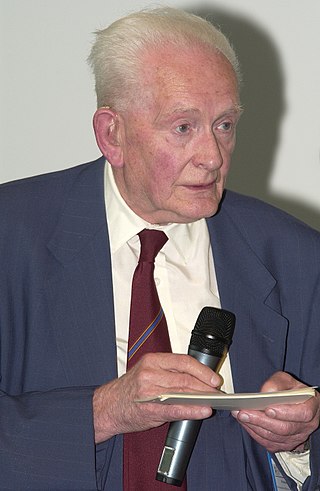
John Rowland Mallard OBE FRSE FREng was an English physicist and professor of Medical Physics at the University of Aberdeen from 1965 until his retirement in 1992. He was known for setting up and leading the team that developed the first magnetic resonance imaging (MRI) full body scanner and, in particular, positron emission tomography (PET). He was born in Kingsthorpe, Northampton, England.

Ali Khademhosseini is the Director and CEO of the Terasaki Institute and former professor at the University of California-Los Angeles where he held a multi-departmental professorship in Bioengineering, Radiology, Chemical, and Biomolecular Engineering and the Director of Center for Minimally Invasive Therapeutics (C-MIT). From 2005 to 2017, he was a professor at Harvard Medical School, and the Wyss Institute for Biologically Inspired Engineering. His studies have been cited ~100,000 times. Khademhosseini is best known for developing hydrogels for tissue engineering and bioprinting.
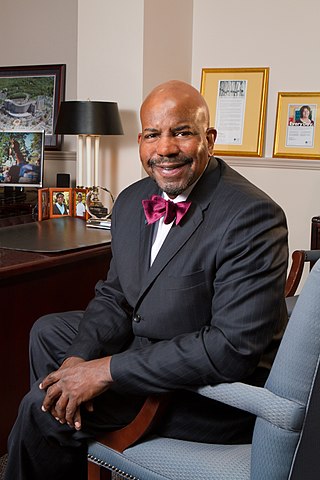
Cato T. Laurencin, M.D., Ph.D., FREng SLMH, is an American engineer, physician, scientist, innovator and a University Professor of the University of Connecticut.

Nicholas (Nikolaos) A. Peppas is a chemical and biomedical engineer whose leadership in biomaterials science and engineering, drug delivery, bionanotechnology, pharmaceutical sciences, chemical and polymer engineering has provided seminal foundations based on the physics and mathematical theories of nanoscale, macromolecular processes and drug/protein transport and has led to numerous biomedical products or devices.
Dame Anna Felicja Dominiczak DBE FRCP FRSE FAHA FMedSci is a Polish-born British medical researcher, Regius Professor of Medicine - the first woman to hold this position, and Vice-Principal and Head of the College of Medical, Veterinary and Life Sciences at the University of Glasgow, Scotland. She was a non-executive member of NHS Greater Glasgow and Clyde Health Board. before stepping down and taking a secondment with the UK Government's Test and Trace programme. From 2013 to 2015, Dominiczak was president of the European Society of Hypertension.
Kristi S. Anseth is the Tisone Distinguished Professor of Chemical and Biological Engineering, an Associate Professor of Surgery, and a Howard Hughes Medical Investigator at the University of Colorado at Boulder. Her main research interests are the design of synthetic biomaterials using hydrogels, tissue engineering, and regenerative medicine.
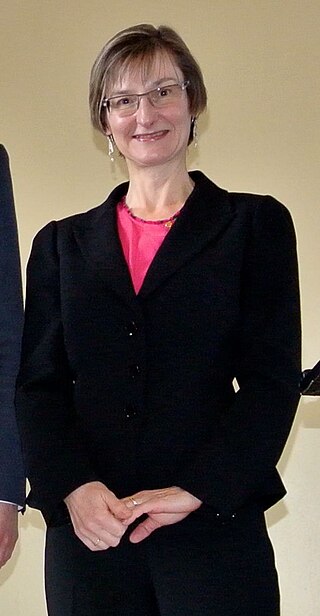
Dame Muffy Calder is a Canadian-born British computer scientist, Vice-Principal and Head of College of Science and Engineering, and Professor of Formal Methods at the University of Glasgow. From 2012 to 2015 she was Chief Scientific Advisor to the Scottish Government.
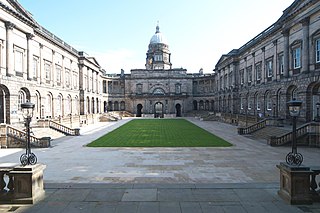
The Regius Chair of Engineering is a royal professorship in engineering, established since 1868 in the University of Edinburgh, Scotland. The chair is attached to the University's College of Science and Engineering, based in the King's Buildings in Edinburgh. Appointment to the Regius Chair is by Royal Warrant from the British monarch, on the recommendation of Scotland's First Minister.

Jason Meredith Reese (24 June 1967 – 8 March 2019 was a British engineering scientist, and Regius Professor of Engineering at the University of Edinburgh.
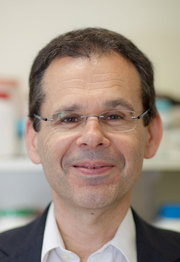
Anthony Steven Weiss AM PhD FRSC FTSE FRSN FRACI, FTERM, FBSE is a university researcher, company founder and entrepreneur. He is the leading scientist in human tropoelastin research and synthetic human elastin. He holds the McCaughey Chair in Biochemistry, heads the Charles Perkins Centre Node in Tissue Engineering and Regenerative Medicine, and is Professor of Biochemistry and Molecular Biotechnology at the University of Sydney. His discoveries are on human elastic materials that accelerate the healing and repair of arteries, skin and 3D human tissue components. He is a Fellow of the Royal Society of Chemistry. Weiss is on the editorial boards of the American Chemical Society Biomaterials Science and Engineering, Applied Materials Today (Elsevier), Biomaterials, Biomedical Materials, BioNanoScience (Springer) and Tissue Engineering. He is a biotechnology company founder, promoter of national and international technology development, and has received national and international awards, including the Order of Australia.
Treena Livingston Arinzeh is Professor of Biomedical Engineering at Columbia University in New York, New York, joining in 2022. She was formerly a Distinguished Professor in Biomedical Engineering at the New Jersey Institute of Technology in Newark, New Jersey. She is known for her research on adult stem-cell therapy. Arinzeh takes part in the American Chemical Society's Project Seeds program, opening up her lab for high school students from economically disadvantaged backgrounds for summer internships.

Anne Neville was the Royal Academy of Engineering Chair in emerging technologies and Professor of Tribology and Surface Engineering at the University of Leeds.

Julia Alison Noble is Technikos professor of Biomedical Engineering at the University of Oxford, a fellow of St Hilda's College, Oxford and Associate Head of the Mathematical, Physical and Life Sciences Division at the university. As of 2017 she is chief technology officer (CTO) of Intelligent Ultrasound Limited an Oxford University spin-off in medical imaging which she cofounded. She was director of the Oxford Institute of Biomedical Engineering (IBME) from 2012 to 2016.
Eleanor Phoebe Jane Stride is a Professor of Biomaterials at St Catherine's College, Oxford. Stride engineers drug delivery systems using carefully designed microbubbles and studies how they can be used in diagnostics.

The Department of Materials is responsible for the teaching and research in materials science and engineering at Imperial College London, occupying the Royal School of Mines and Bessemer buildings on the South Kensington campus. It can trace its origins back to the metallurgy department of the Government School of Mines and Science applied to the Arts, founded in 1851.

Gail McConnell is a Scottish physicist who is Professor of Physics and director of the Centre for Biophotonics at the University of Strathclyde. She is interested in optical microscopy and novel imaging techniques, and leads the Mesolens microscope facility where her research investigates linear and non-linear optics.
Susmita Bose is an Indian-American scientist and engineer, best known for her research on biomaterials, 3D printing or additive manufacturing of bone implants and natural medicine. She is the Herman and Brita Lindholm Endowed Chair Professor in the School of Mechanical and Materials Engineering at Washington State University.
Elizabeth Cosgriff-Hernandez is an American biomedical engineer who is a professor at the University of Texas at Austin. Her work involves the development of polymeric biomaterials for medical devices and tissue regeneration. She also serves on the scientific advisory board of ECM Biosurgery and as a consultant to several companies on biostability evaluation of medical devices. Cosgriff-Hernandez is an associate editor of the Journal of Materials Chemistry B and Fellow of the International Union of Societies for Biomaterials Science and Engineering, Biomedical Engineering Society, Royal Society of Chemistry, and the American Institute for Medical and Biological Engineering.
Melissa Ann Grunlan is an American scientist. She is Professor and Holder of the Charles H. and Bettye Barclay Professorship in the Department of Biomedical Engineering at Texas A&M University. She holds courtesy appointments in the Departments of Chemistry and Materials Science & Engineering.
Patricia Connolly is a Scottish biomedical engineer whose expertise concerns the development of bioelectronic devices for medical diagnostics and monitoring. She is a professor of biomedical engineering at the University of Strathclyde, the director of the Strathclyde Institute of Medical Devices, deputy associate principal of the university, joint lead for the university's HealthTech Cluster, founding CEO of Strathclyde spinout corporation Ohmedics Ltd, and a member of the board of directors of the Association of British HealthTech Industries.












